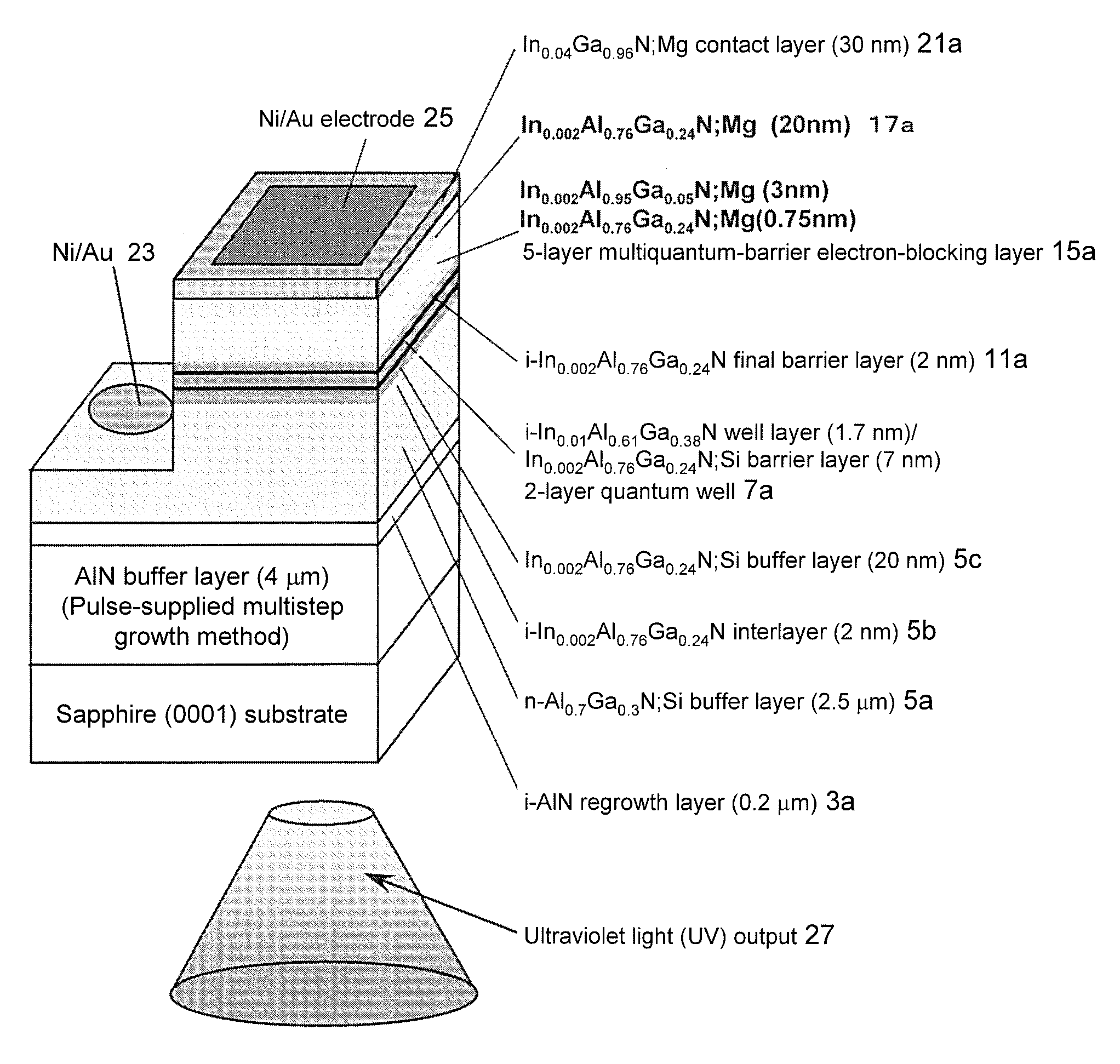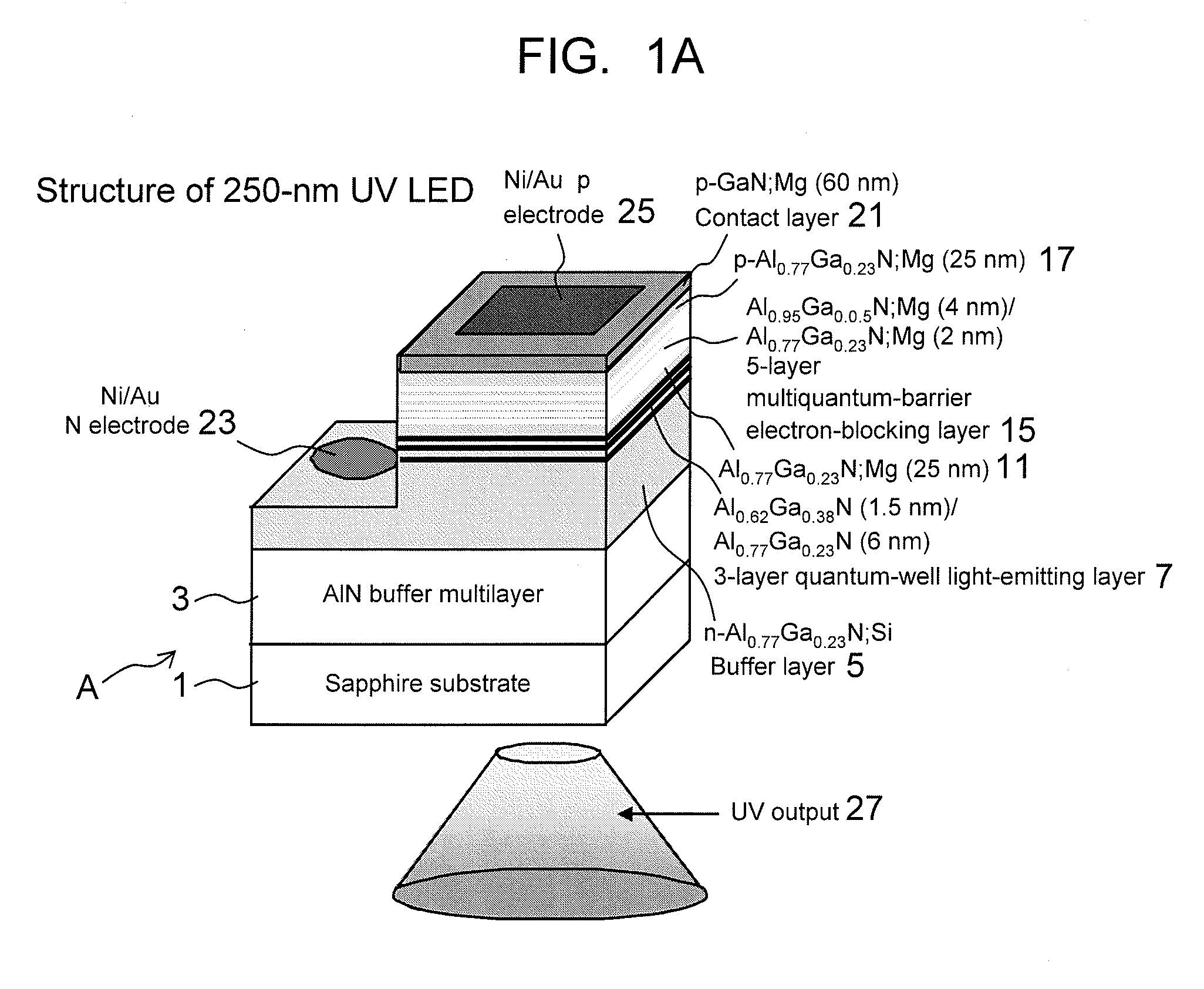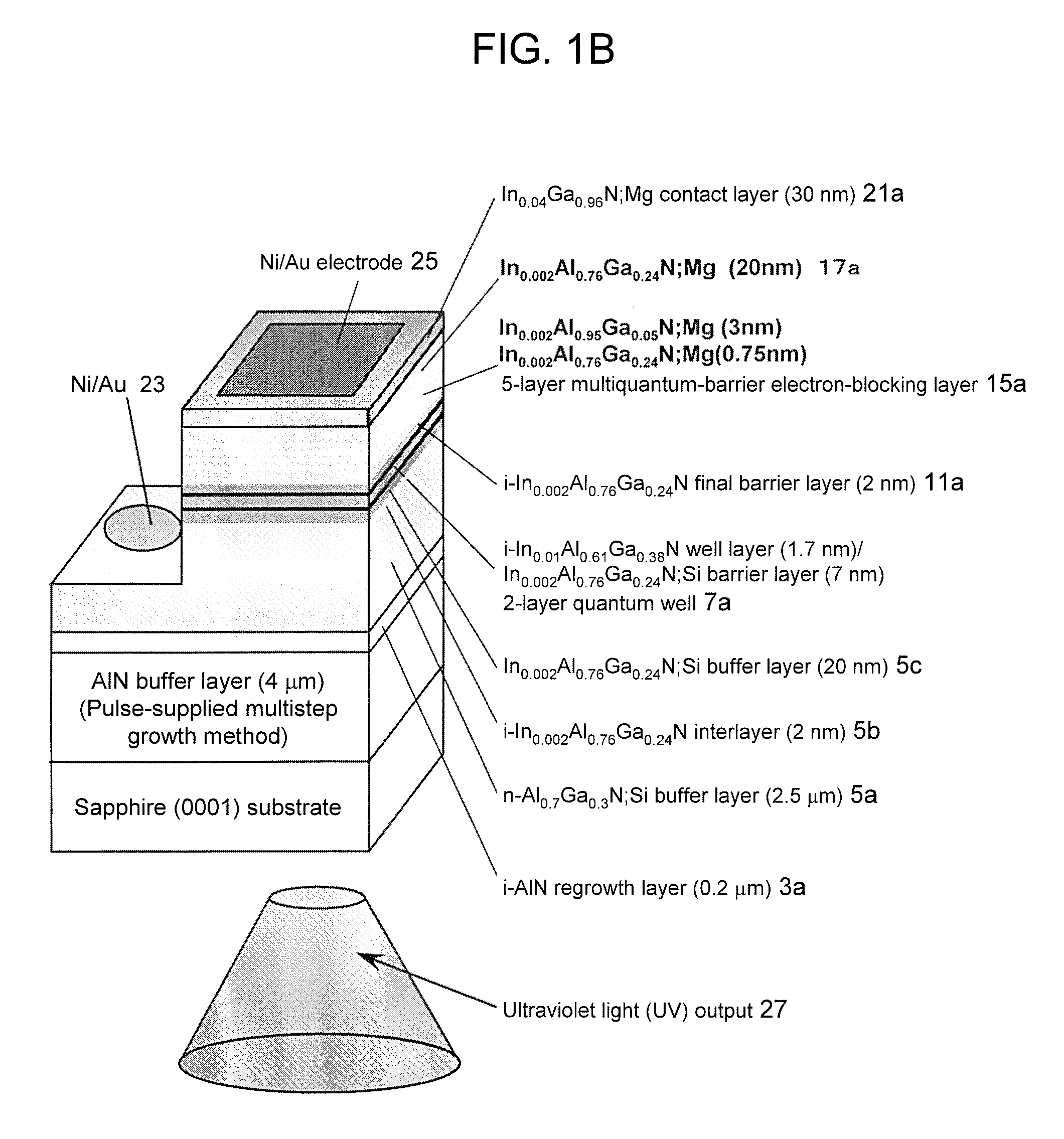Light-emitting element having nitride semiconductor multiquantum barrier, and process for production thereof
a light-emitting element and semiconductor technology, applied in semiconductor/solid-state device manufacturing, semiconductor devices, electrical equipment, etc., can solve the problems of limited general purpose applications of conventional uv light sources, low -type concentration in algan, and difficult general purpose applications, etc., to improve the electron blocking effect, the barrier height is higher, and the mqb period is longer
- Summary
- Abstract
- Description
- Claims
- Application Information
AI Technical Summary
Benefits of technology
Problems solved by technology
Method used
Image
Examples
embodiment 1
[0110]FIG. 11 ((a) and (b)) shows energy dependences of electron transmission coefficients obtained using a single barrier and an MQB based on the results of FIGS. 10A and 10B. A combination of barrier periods is used so as to achieve high electron reflection at the highest possible energy levels greater than the energy level of the barrier band edge. FIG. 11 shows the following: (a) an example of an MQB structure in which the barrier period increases in order from the MQW side; and (b) an example of an MQB structure in which the barrier period increases in order from the opposite side. Energy dependences of electron transmission coefficients in both cases are lower than those shown in examples of FIGS. 10A and 10B in a wide range. It is understood that electron-blocking layers shown in FIG. 11 are very useful. The effective barrier height is about 3.5 times greater than that for a single barrier.
[0111]A comparison of (a) and (b) in FIG. 11 shows that there is no dependence associat...
embodiment 2
[0123]The characteristics of a C-plane-grown polar crystal are described below. Each of FIGS. 17A to 20 shows characteristics of C-plane-grown (but not A-plane-grown) MQBs substantially similar to those obtained in Embodiment 1. For a polar MQB, MQB effects basically tend to be similar to those for a non-polar MQB. However, the band gradient causes blurred reflectance, making the effects of a polar MQB relatively complicated. The characteristics obtained in the case of a polar MQB are described in detail below.
[0124]For a polar MQB, even the barrier energy of a single barrier shows a cutting blade form, and thus the electron barrier is originally higher than that for a non-polar MQB. Accordingly, an increase in the effective barrier height derived from such MQB becomes smaller than that for a non-polar MQB.
[0125]In order to form sharp cutting blade shapes of MQB barriers and increase the barrier heights to the maximum possible levels, it is desirable to increase the barrier / valley f...
PUM
 Login to View More
Login to View More Abstract
Description
Claims
Application Information
 Login to View More
Login to View More - R&D
- Intellectual Property
- Life Sciences
- Materials
- Tech Scout
- Unparalleled Data Quality
- Higher Quality Content
- 60% Fewer Hallucinations
Browse by: Latest US Patents, China's latest patents, Technical Efficacy Thesaurus, Application Domain, Technology Topic, Popular Technical Reports.
© 2025 PatSnap. All rights reserved.Legal|Privacy policy|Modern Slavery Act Transparency Statement|Sitemap|About US| Contact US: help@patsnap.com



